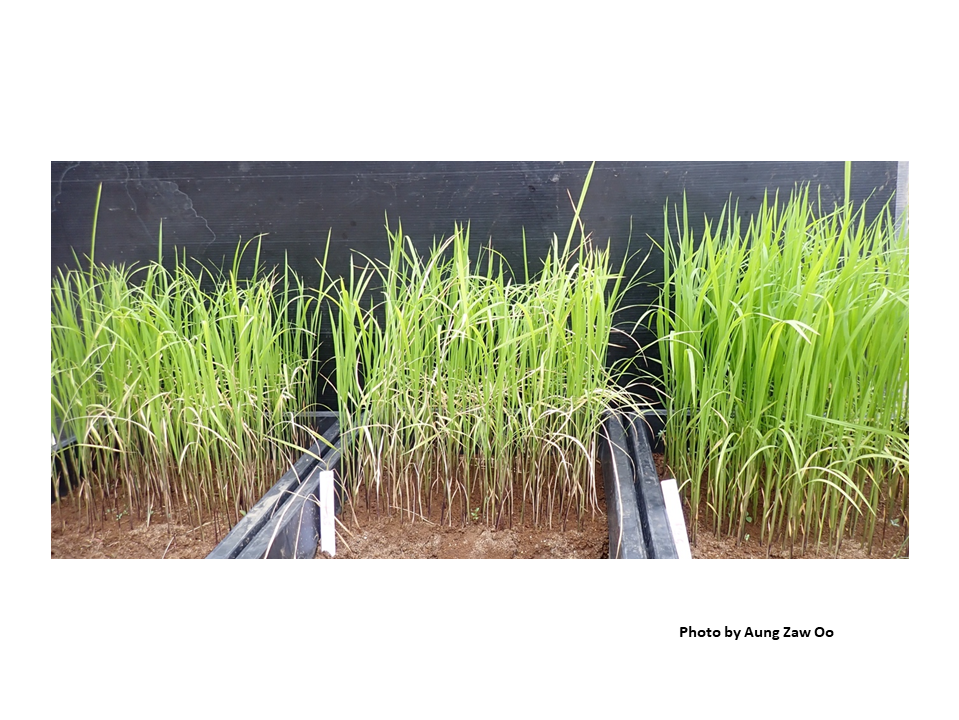Pick Up
818. Rice Seeds High in Phytic Acid can Improve Early Growth

818. Rice Seeds High in Phytic Acid can Improve Early Growth
Phosphorus, along with nitrogen and potassium, is one of the three main nutrients essential for plant growth. Therefore, phosphorus fertilizer supplementation is one of the pillars of modern agriculture. However, in recent years, in addition to the situation in Ukraine and the impact of the COVID-19 pandemic, there have been concerns about the depletion of phosphorus ore, the raw material for fertilizers, and the price of phosphorus fertilizers continues to soar. In the tropical developing regions where JIRCAS conducts research, weathered soils deficient in phosphorus are widespread, but sufficient phosphorus fertilizers cannot be purchased and applied for economic reasons. For this reason, JIRCAS has been involved in various research efforts to overcome phosphorus deficiency.
Phytic acid is a substance consisting of six phosphate groups attached to inositol. It accumulates in the pericarp of the fruit and serves as a phosphorus reservoir in the seeds. Most of the phosphorus absorbed by the plant is eventually translocated to the seed and passed on to the next generation as phytic acid. Phytic acid is unique in that it chelates iron and zinc and cannot be broken down by the human digestive system. For this reason, phytic acid is generally considered to be an antinutritive agent that inhibits the absorption of important nutrients and minerals. It is also known that in livestock production, phytic acid in feed is excreted without being broken down, causing eutrophication of rivers and lakes. Furthermore, as the amount of phytic acid, a phosphorus storage material, increases, a large amount of phosphorus fertilization is required.
To address these problems, research has been conducted to reduce phytic acid in cereal seedlings. However, from the point of view of crop production, phytic acid in seeds is a source of phosphorus for plant growth, so reducing phytic acid should have no small effect on plant growth. Therefore, JIRCAS conducted a study on the effect of phytic acid concentration in rice seeds on the growth of rice seedlings. In the paper titled Seed phytic acid concentration affects rice seedling vigor irrespective of soil phosphorus bioavailability published in Physiologia Plantarum in 2023, we investigated the early growth of rice plants using seeds with different phytic acid levels and found that not only phosphorus-deficient soils but also phosphorus-rich soils were affected by seed phytic acid concentration. We found that using seeds with high phytic acid content can improve the early growth of rice plants not only in phosphorus-deficient soils but also in phosphorus-rich soils.
Photo caption: Growth of black rice seedlings under low soil phosphorus concentrations. Left: Rice seedlings with low phytic acid concentration in seeds. Middle: Rice seedlings with medium phytic acid concentration in seeds. Right: rice seedlings with high phytic acid concentration in seeds. (Photo by Aung Zaw Oo)
Reference
Aung Zaw Oo et al. (2023) Seed phytic acid concentration affects rice seedling vigor irrespective of soil phosphorus bioavailability. Physiologia Plantarum 175: e13913.
Contributors: ASAI Hidetoshi and Aung Zaw OO (Crop, Livestock and Environment Division)
